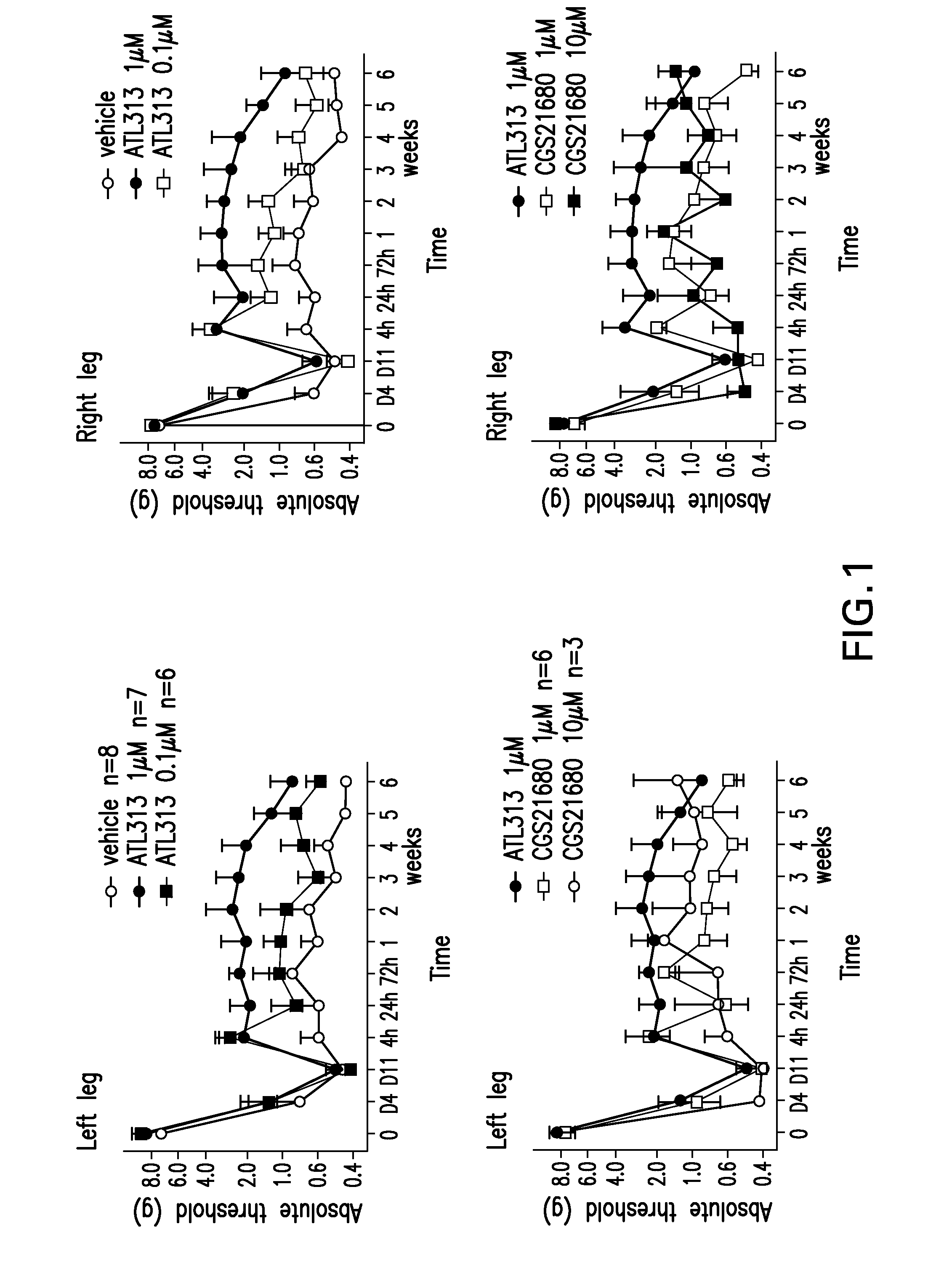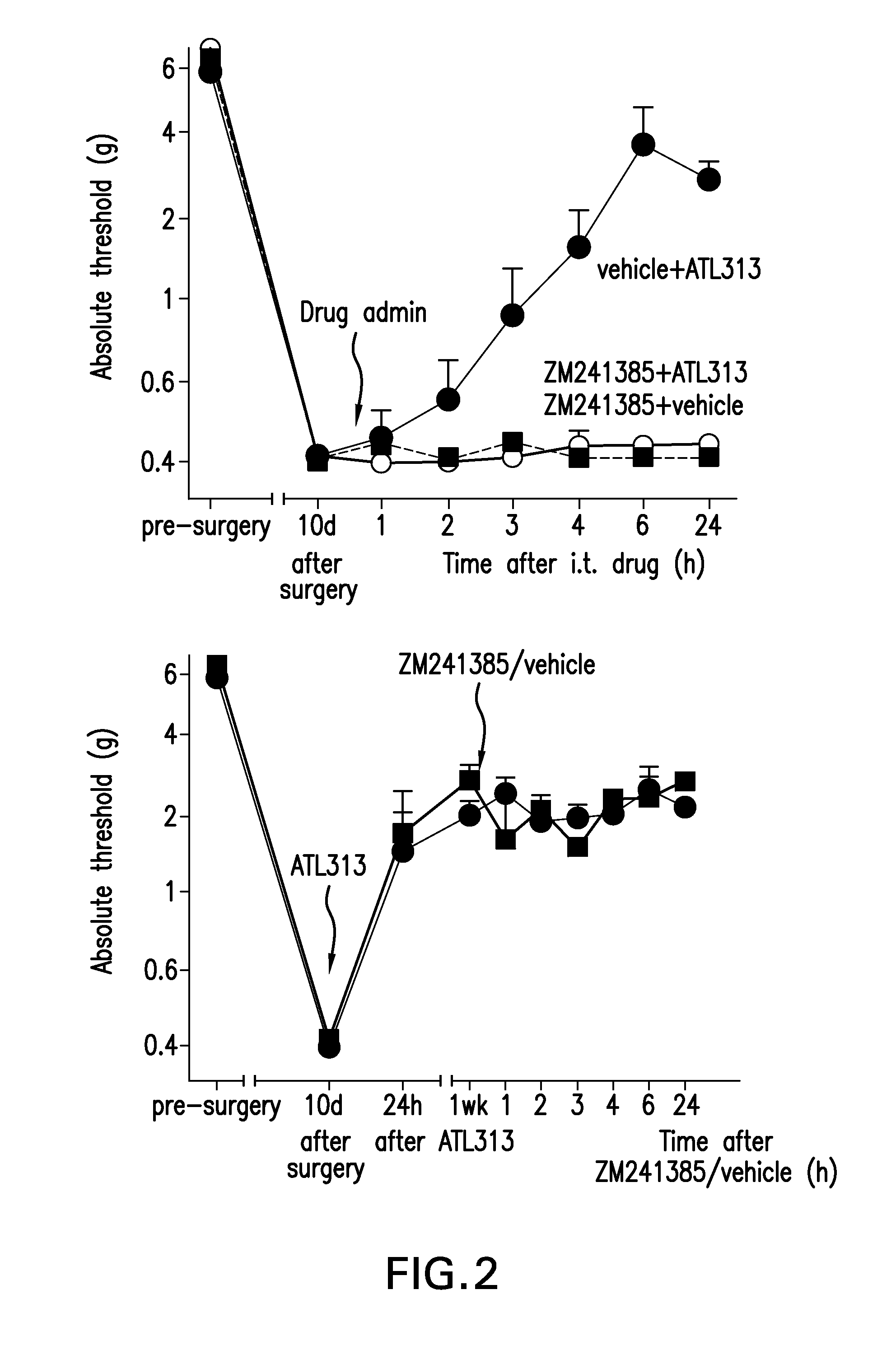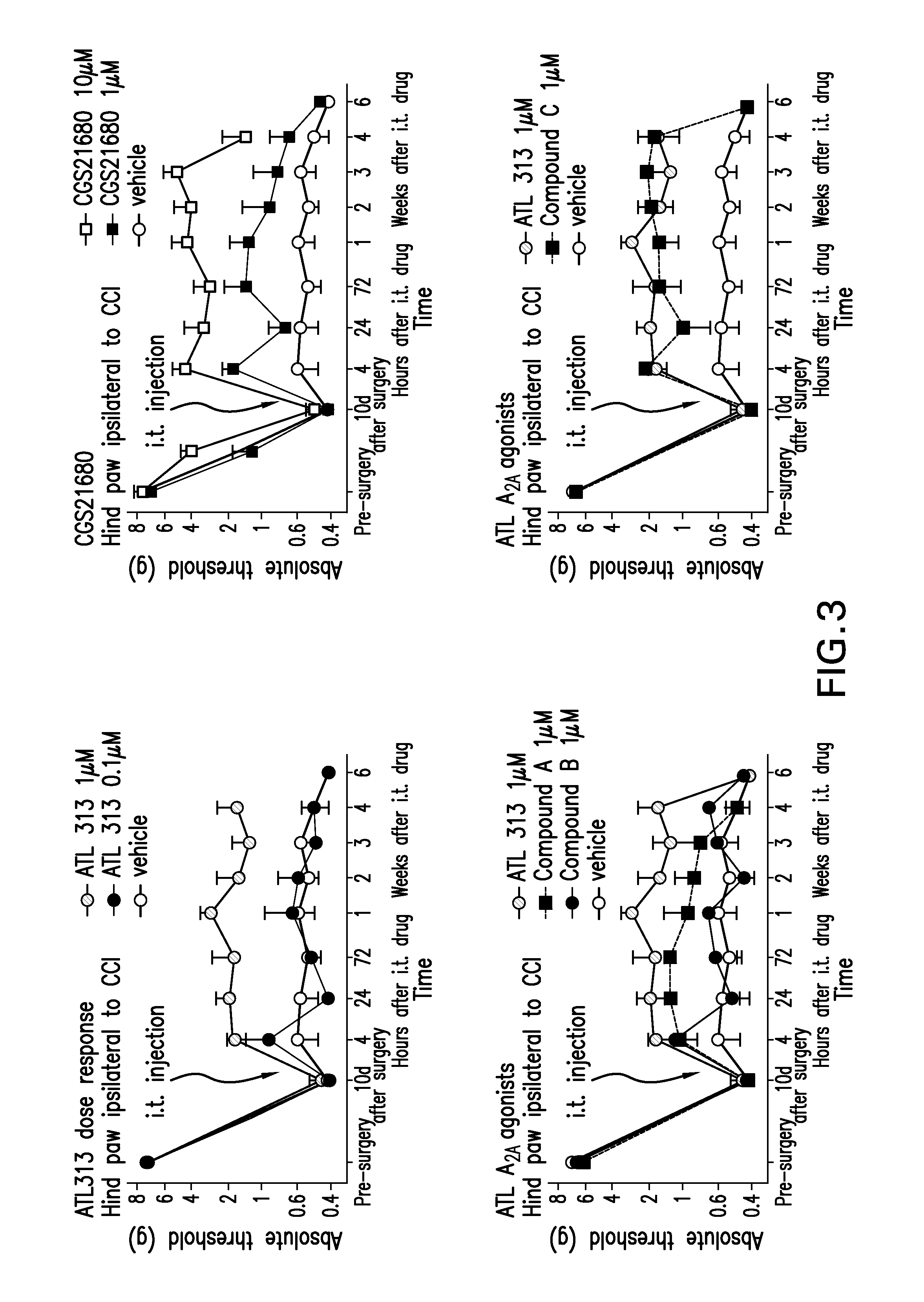Intrathecal treatment of neuropathic pain with a2ar agonists
a technology of neuropathic pain and agonists, applied in the field of intrathecal treatment of neuropathic pain with a2ar agonists, can solve the problems of major unresolved problems in neuropathic pain
- Summary
- Abstract
- Description
- Claims
- Application Information
AI Technical Summary
Benefits of technology
Problems solved by technology
Method used
Image
Examples
example 1
Administration of A2A Agonists
[0276]Sprague Dawley rats underwent chronic constriction injury (CCI) of the sciatic nerve or sham surgery. After pre-surgery baseline testing (Day 0=D0), rats received chronic constriction injury of the left sciatic nerve at mid-thigh level to produce neuropathic pain (chronic constriction injury model: CCI). This is seen by the fall in pain threshold between days 4 and 11 (D4, D11) after surgery relative to D0. Once CCI-induced allodynia was stable as tested by von Frey filaments, the material to be studied (e.g., vehicle or A2AR agonists CGS21680 or ATL313) was injected intrathecally. After injection, behavioral testing occurred at 4, 24, and 72 h and then weekly for 6 weeks.
[0277]The results of the studies are shown in FIG. 1 with the translation of Y-axis units as follows: 5=10 grams, 4.75=5.62 grams, 4.5=3.16 grams, 4.25=1.73 grams, 4=1 gram, 3.75=0.56 grams, 3.5=0.32 grams.
example 2
Blockade and Reversal of A2A Agonist by an Antagonist (ZM241385)
[0278]CCI surgery and indwelling intrathecal catheters were implanted in male Sprague-Dawley rats (325-350 g, n=6 / group). 10-14 days after surgery, when the allodynia is stable, an A2A antagonist (ZM241385, 10 uM, Tocris Bioscience) or vehicle was co-administered with ATL313 or vehicle. von Frey testing was done before surgery, before intrathecal injections, and 1, 2, 3, 4, 6, and 24 h after injection.
[0279]In a separate group of animals, ATL313 (1 uM) was administered 10-14 days after CCI surgery. One week after ATL313 (1 uM, i.t.) administration, ZM241385 (10 uM) or equivolume vehicle was administered intrathecally. von Frey testing was done 1, 2, 3, 4, 6 & 24 h after injection.
[0280]FIG. 2, top panel, demonstrates that co-administration of ATL313 and ZM241385, 10-14 days after CCI surgery, abolishes the effect of ATL313 on the CCI-induced allodynia (P2A antagonist (ZM241385, 10 uM), to that of the A2A agonist (1 uM),...
example 3
Dose Response of ATL313 and Comparison with Other A2A Agonists
[0282]The mechanical sensitivity to von Frey filaments applied to the plantar surface of the hind paw, measured in grams, in animals following unilateral CCI surgery of the left sciatic nerve increases significantly by 10 days, and remains stable for at least 9 wks following surgery (not shown). A single intrathecal injection of ATL313 (1 uM) given 10-14 days after CCI surgery when the allodynia is stable, results in a partial reversal of the allodynia for at least 4 weeks (P0.05). Although the CCI surgery is unilateral (left sciatic nerve), the allodynia is present bilaterally. In addition, the reversal of allodynia by A2A agonism also occurs bilaterally. Therefore, ATL313 activates A2A receptors within the spinal cord altering the mechanisms leading to central sensitization.
[0283]FIG. 3, top left panel, shows a dose-response of ATL313. The animals following unilateral CCI surgery of the left sciatic nerve, as noted abov...
PUM
| Property | Measurement | Unit |
|---|---|---|
| Fraction | aaaaa | aaaaa |
| Fraction | aaaaa | aaaaa |
| Force | aaaaa | aaaaa |
Abstract
Description
Claims
Application Information
 Login to View More
Login to View More - R&D
- Intellectual Property
- Life Sciences
- Materials
- Tech Scout
- Unparalleled Data Quality
- Higher Quality Content
- 60% Fewer Hallucinations
Browse by: Latest US Patents, China's latest patents, Technical Efficacy Thesaurus, Application Domain, Technology Topic, Popular Technical Reports.
© 2025 PatSnap. All rights reserved.Legal|Privacy policy|Modern Slavery Act Transparency Statement|Sitemap|About US| Contact US: help@patsnap.com



